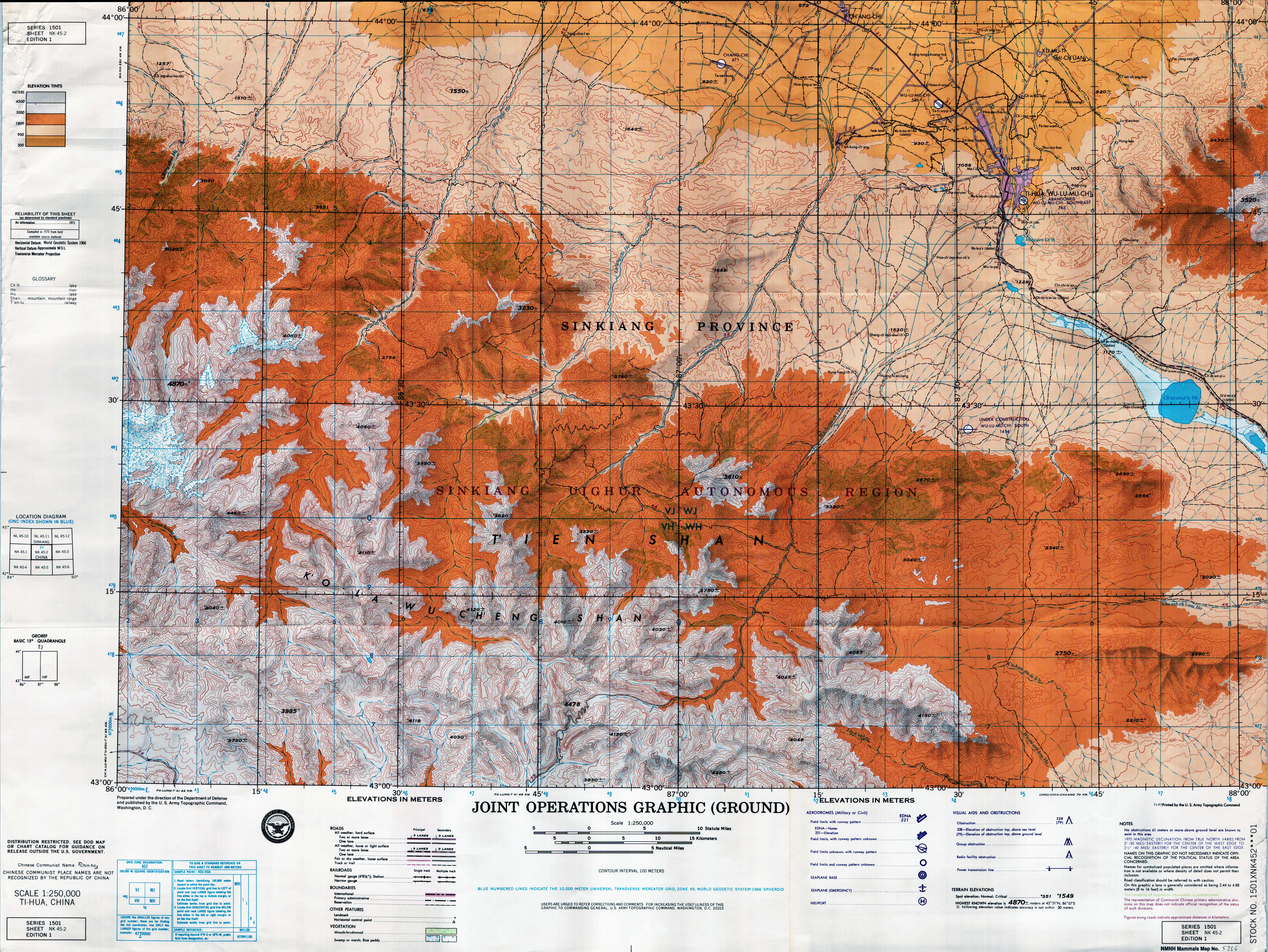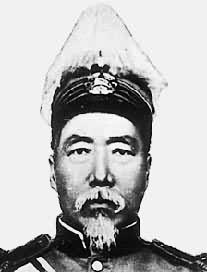|
ûrû¥mqi
ûrû¥mqi, , is the capital of the Xinjiang, Xinjiang Uyghur Autonomous Region in Northwestern China. With a census population of 4 million in 2020, ûrû¥mqi is the second-largest city in China's northwestern interior after Xi'an, also the second-largest in Central Asia in terms of population, right after Kabul, Afghanistan. ûrû¥mqi has seen significant economic development since the 1990s and currently serves as a List of transport topics#Nodes, regional transport node and a cultural, political and commercial center. Etymology The name ûrû¥mqi comes from the Mongolic languages, Mongolic Oirat language and means "beautiful pasture" (, ). It was originally the name of a small town founded by the Mongolic peoples, Mongolic, Oirat-speaking Dzungar people, Dzungars. The Qing dynasty took ûrû¥mqi by force in 1755, during DzungarãQing Wars, its conquest of the Dzungar Khanate. Qing forces expanded the town into a walled city from 1763 to 1767, and upon completing the expan ... [...More Info...] [...Related Items...] OR: [Wikipedia] [Google] [Baidu] |
Xinjiang
Xinjiang,; , SASM/GNC romanization, SASM/GNC: Chinese postal romanization, previously romanized as Sinkiang, officially the Xinjiang Uygur Autonomous Region (XUAR), is an Autonomous regions of China, autonomous region of the China, People's Republic of China (PRC), located in the Northwest China, northwest of the country at the crossroads of Central Asia and East Asia. Being the List of Chinese administrative divisions by area, largest province-level division of China by area and the List of the largest country subdivisions by area, 8th-largest country subdivision in the world, Xinjiang spans over and has about 25 million inhabitants. Xinjiang Borders of China, borders the countries of Afghanistan, India, Kazakhstan, Kyrgyzstan, Mongolia, Pakistan, Russia, and Tajikistan. The rugged Karakoram, Kunlun Mountains, Kunlun and Tian Shan mountain ranges occupy much of Xinjiang's borders, as well as its western and southern regions. The Aksai Chin and Trans-Karakoram Tract regions ... [...More Info...] [...Related Items...] OR: [Wikipedia] [Google] [Baidu] |
Uyghurs
The Uyghurs,. alternatively spelled Uighurs, Uygurs or Uigurs, are a Turkic peoples, Turkic ethnic group originating from and culturally affiliated with the general region of Central Asia and East Asia. The Uyghurs are recognized as the titular nationality of the Xinjiang Uyghur Autonomous Region in Northwest China. They are one of Ethnic minorities in China, China's 55 officially recognized ethnic minorities. The Uyghurs have traditionally inhabited a series of Oasis, oases scattered across the Taklamakan Desert within the Tarim Basin. These oases have historically existed as independent states or were controlled by many civilizations including History of China, China, the Mongol Empire, Mongols, the Tibetan Empire, Tibetans, and various Turkic polities. The Uyghurs gradually started to become Islamized in the 10th century, and most Uyghurs identified as Muslims by the 16th century. Islam has since played an important role in Uyghur culture and identity. An estimated 80% ... [...More Info...] [...Related Items...] OR: [Wikipedia] [Google] [Baidu] |
Hong Shan
Coordinates: Hong Shan, Hongshan or the Red Mountain (; Pinyin: Hû°ng Shán; ; ''Qiziltagh'') is an inner city mountain in ûrû¥mqi, capital of Xinjiang, China. The mountain, sometimes referred to as a hill for its smaller size than a mountain in land form, is the symbolic scenic spot of ûrû¥mqi. The local ûrû¥mqi Television Station adopted the shape of Hong Shan in red as its logo. Etymology As the rocks of the mountain reflect a bright red color, people call it Hong Shan ("Red Mountain" in Chinese). The red rocks are composed of dark purple sand gravel laid down during the Permian period. Hong Shan Mountain lies at the intersection of Hongshan Road (Ó¤ÂÍÝÝÒñ₤) and Riverside Road (Hetan Road) (Ìý°Ì£ˋÒñ₤), ûrû¥mqi, and is best viewed from Xi Daqiao Bridge (ÒË¢ÍÊÏÌÀË). History Hong Shan Park is in the center of ûrû¥mqi and contains a 1391-meter-high mountain. The temple lying on the hilltop is called Yu Huang Ge ("Chamber of Heavenly King") and is said to have been built ... [...More Info...] [...Related Items...] OR: [Wikipedia] [Google] [Baidu] |
People's Square (ûrû¥mqi)
People's Square of ûrû¥mqi ( zh, s=ð¿Õý̴է͡ð¤¤Ì¯Í¿¢Í¤, t=ÓÕÙ₤̴է͡ð¤¤Ì¯Í£ÈÍ Ç; ) is a large public square located around the major intersections of Central Business District of ûrû¥mqi, the capital of Xinjiang, China. Located in Tianshan District, it is a primary tourist destination in the city and is also used to hold large events and serves as a general place of daily amusement for local residents. History During the Qing dynasty, the original site was a lotus pool. In 1934, it was a property land of the supervision administration office of ROC government. The area was named "Peace Square" in 1946 when the then Xinjiang provincial government peacefully negotiated with the revolutionary governments of Ili, Tacheng and Altay and the name was changed into "People's Square" in 1950. On May 19, 1989, unrest took place on the square, where thousands of rioters smashed windows, overthrew cars and attacked staff of the CPC office, against the building of CPC com ... [...More Info...] [...Related Items...] OR: [Wikipedia] [Google] [Baidu] |
People's Park (ûrû¥mqi)
People's Park () is an urban public park in the center of ûrû¥mqi, the capital of Xinjiang Uyghur Autonomous Region in northwestern China. People's Park and the nearby Hong Shan are very popular recreation areas for local residents. The Xinjiang Uyghur Museum was formerly located in the park. History After the Qing dynasty conquest of the Dzungar Khanate in 1755, the Qianlong Emperor established the city of Dihua (ûrû¥mqi) in Dzungaria. Outside the city walls, a lake on the former course of the ûrû¥mqi River was made into a recreational area for Qing officials. Several years later, the Mongol official Wumi Tai ( ð¥Í§Ì°¯) built the Xiuye Pavilion (), the first structure in the area, which became a major attraction in Dihua. The lake was later called Guan Lake (). After Tajik adventurer Yakub Beg's brief rule in Dzungaria, Qing general Zuo Zongtang successfully reconquered the area in 1878, and the Qing court established the new province of Xinjiang in 1884. To demonstr ... [...More Info...] [...Related Items...] OR: [Wikipedia] [Google] [Baidu] |
Grand Bazaar (ûrû¥mqi)
The Xinjiang International Grand Bazaar ( zh, s=̯ÓÍ§Õ ÍÊÏÍñÇÌ, t=̯ÓÍÕÍÊÏÍñÇÌ, p=Xá¨njiáng Guû°jû˜ Dû bázhá; , ), also known as International Grand Bazaar Xinjiang, is an Islamic bazaar in ûrû¥mqi, Xinjiang, China. It is the largest bazaar in the world by scale, combining Islamic culture, architecture, ethnic commerce, tourism and entertainment. It is also one of the most famous landmarks in ûrû¥mqi and in Xinjiang. Overview The construction of the bazaar was completed in late 2002; it was opened to public on 26 June 2003, Retrieved on January 20, 2010 located near Erdaoqiao at South Jiefang Road ( zh, c=ÒÏÈ̃ÍÒñ₤). The buildings and area within are constructed in an Islamic style representative of the preponderant religion and ethnic culture of the wes ... [...More Info...] [...Related Items...] OR: [Wikipedia] [Google] [Baidu] |
China Standard Time
The time in China follows a single standard UTC offset, time offset of UTC+08:00, where Beijing is located, even though the country spans five geographical time zones. It is the largest sovereign nation in the world that officially observes only one time zone. The nationwide standardized time is named Beijing Time (BJT; ) domestically and China Standard Time (CST) internationally. Daylight saving time has not been observed since 1991. China Standard Time (UTC+8) is consistent across Mainland China, Hong Kong Time, Hong Kong, and Macau Standard Time, Macau. It is also equivalent with Time in Taiwan, Taiwan, Philippine Standard Time, Philippines, Singapore Standard Time, Singapore, Time in Brunei, Brunei, most of Time in Mongolia, Mongolia, Time in Malaysia, Malaysia, Irkutsk Time of Russia, Time in Australia, Western Australia, and Time in Indonesia, Central Indonesia. History In the 1870s, the Shanghai Xujiahui Observatory was constructed by a French Catholic missionary. In 1 ... [...More Info...] [...Related Items...] OR: [Wikipedia] [Google] [Baidu] |
Northwestern China
Northwestern China () is a region in the People's Republic of China. It consists of five provincial administrative regions, namely Shaanxi, Gansu, Qinghai, Ningxia, and Xinjiang. The region is characterized by a (semi-)arid continental climate. It has a diverse population including significant minorities such as Hui, Uyghurs and Tibetans. Culturally, the region has historically been influenced by the Silk Road. Historic security considerations Chinese dynasties from the Qin (221 BC to 207 BC) to the Qing period (1644 CE to 1911 CE) placed high priority on maintaining stability and security in the region, motivated by concerns about potential threats from the Northwest. Security concerns have continued under modern governments. During the Republic of China period, the government was only able to exercise loose control in the Northwest. In 1933, Pan-Islamic and Pan-Turkic separatists declared an Islamic Republic of East Turkestan based on constitutionally-enshrined Sharia la ... [...More Info...] [...Related Items...] OR: [Wikipedia] [Google] [Baidu] |
Telephone Numbers In China
Telephone numbers in the People's Republic of China are administered according to the Telecommunications Network Numbering Plan of China. The structure of telephone numbers for landlines and mobile service is different. Landline telephone numbers have area codes, whereas mobile numbers do not. In major cities, landline numbers consist of a two-digit area code followed by an eight-digit local number. In other places, landline numbers consist of a three-digit area code followed by a seven- or eight-digit local number. Mobile phone numbers consist of eleven digits. Landline calls within the same area do not require the area code. Calls to other areas require dialing the trunk prefix ''0'' and the area code. The Special administrative regions of China, special administrative regions of Hong Kong and Macau are not part of this numbering plan, and use the calling codes +852, 852 and +853, 853 respectively. Mobile phones In mainland China, mobile phone numbers have eleven digits in ... [...More Info...] [...Related Items...] OR: [Wikipedia] [Google] [Baidu] |
Autonomous Regions Of China
The autonomous regions ( zh, s=ÒˆÌý£Í¤, p=Zû˜zhû˜qé¨) are one of four types of province-level divisions of China, province-level divisions of the People's Republic of China. Like provinces of China, Chinese provinces, an autonomous region has its own local government, but under the law of the People's Republic of China, an autonomous region has more legislative rights, such as the right to "formulate self-government regulations and other separate regulations." An autonomous region is the highest level of Autonomous administrative divisions of China, minority autonomous entity in China, which has a comparably higher population of a particular minority ethnic group. There are five autonomous regions in China: Guangxi, Inner Mongolia, Inner Mongolia (Nei Menggu), Ningxia, Tibet Autonomous Region, Tibet (Xizang), and Xinjiang. History Established in 1947, the Inner Mongolia, Inner Mongolia Autonomous Region became the first autonomous region in the Communist-controlled China ... [...More Info...] [...Related Items...] OR: [Wikipedia] [Google] [Baidu] |
Xinjiang Time
Xinjiang Time (), also known as ûrû¥mqi Time (), is a time standard used in Xinjiang, China. It is used alongside Beijing Time, which is widely observed by the rest of the country. The time offset is UTC+06:00, which is two hours behind Beijing Time and is the same offset used by Kyrgyzstan Time, Kyrgyzstan. This offset accounts for Xinjiang's geographical location in the westernmost part of China. History Xinjiang Time has been abolished and re-established multiple times, particularly during the 1970s and 1980s. In February 1986, the Chinese government approved the use of Xinjiang Time (UTC+06:00) in Xinjiang Uyghur Autonomous Region (thus excluding area colonized by Xinjiang Production and Construction Corps) for civil purposes, while military, railroad, aviation, and telecommunication sectors were supposed to continue using Beijing Time (UTC+08:00). [...More Info...] [...Related Items...] OR: [Wikipedia] [Google] [Baidu] |







